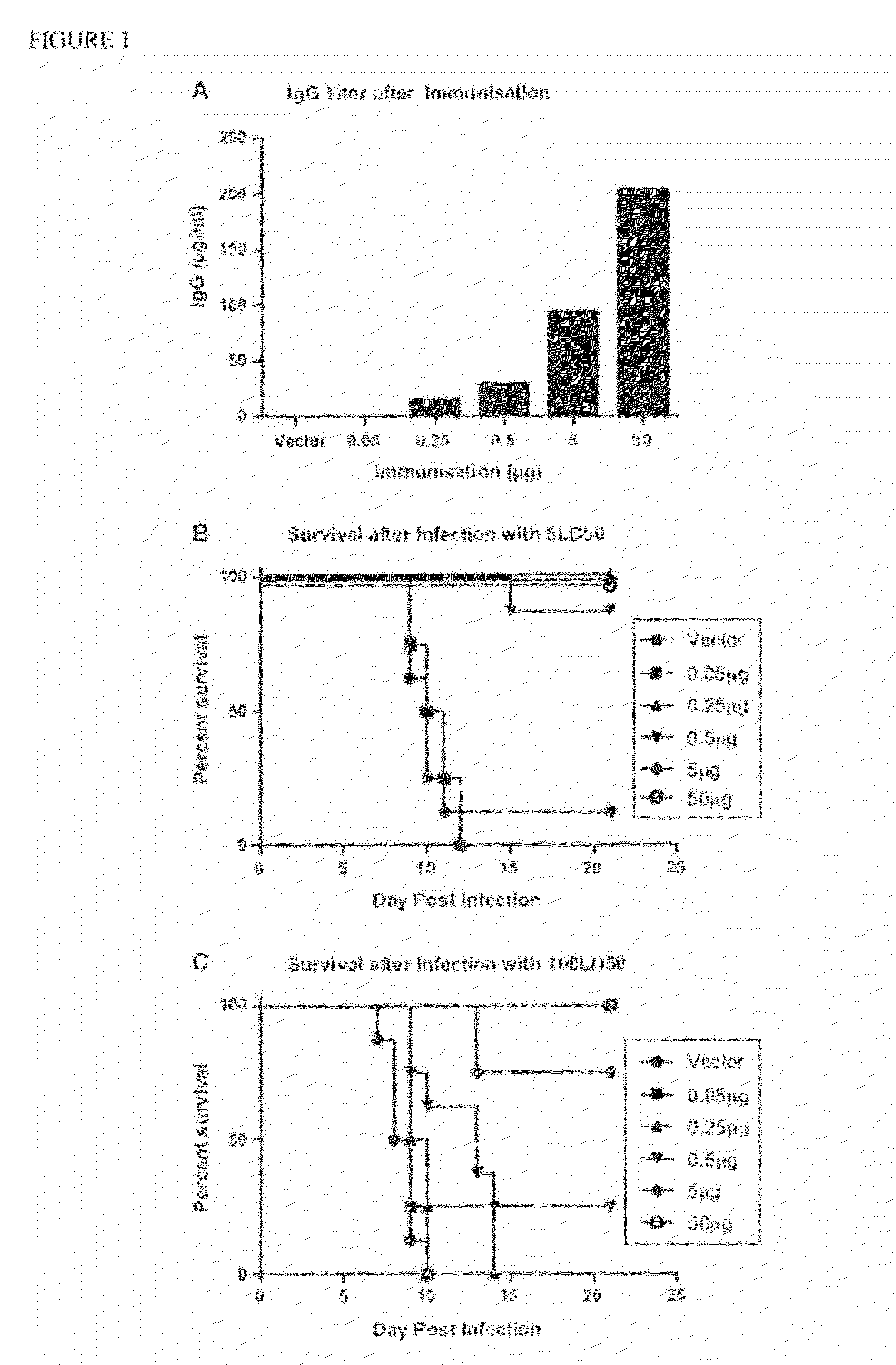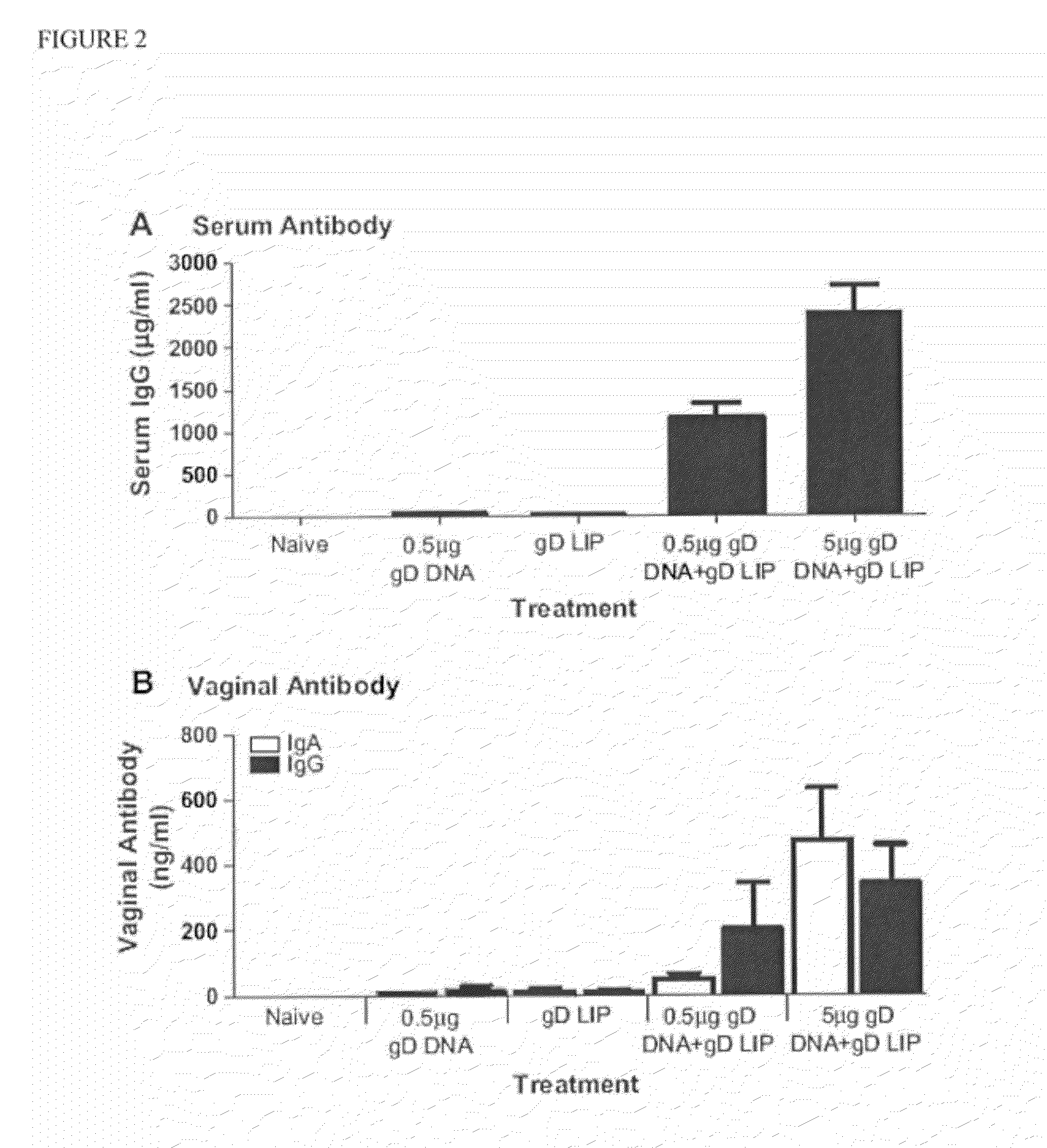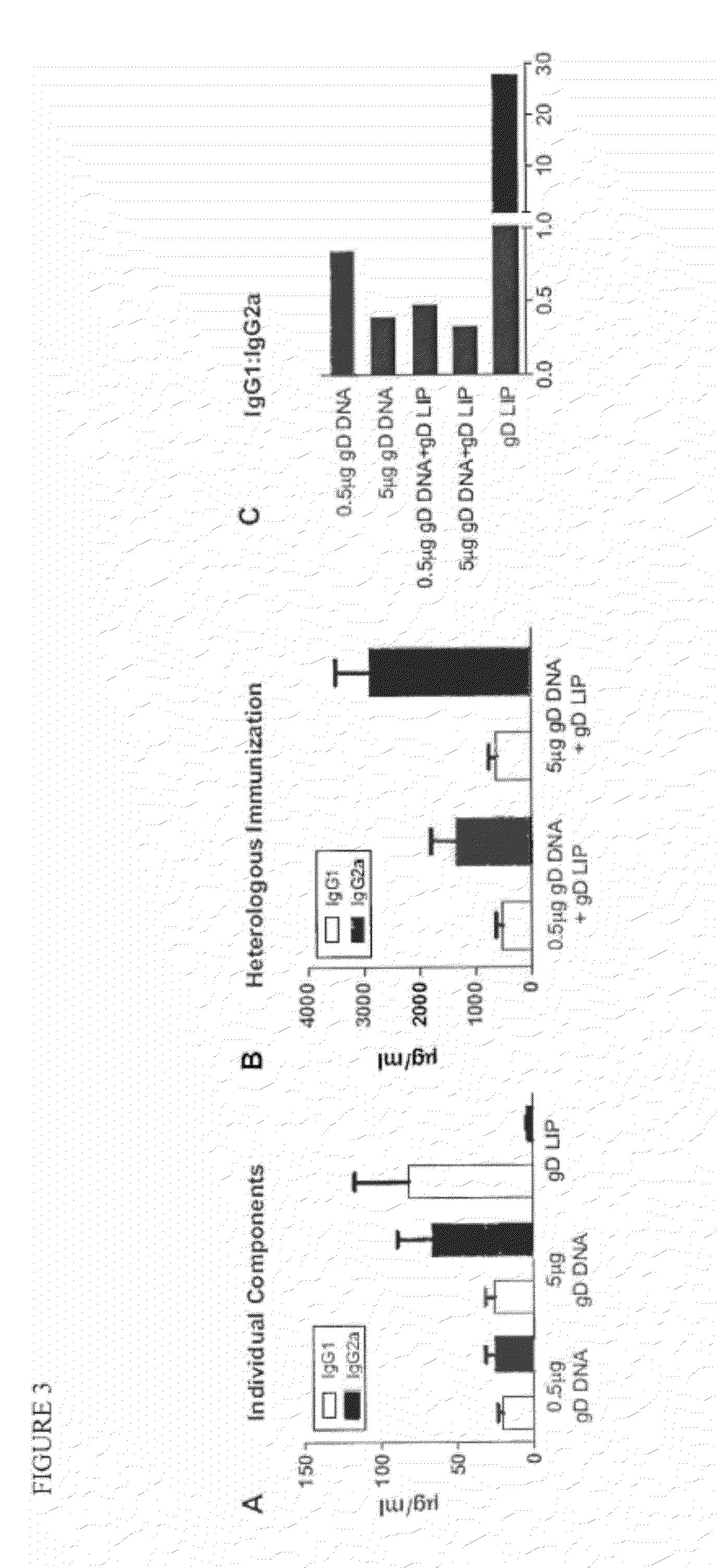Novel mucosal vaccination approach for herpes simplex virus type-2
a technology of herpes simplex virus and mucosal vaccine, which is applied in the field of vaccine development, can solve the problems of significant morbidity and psychological suffering, ineffective subunit vaccine, and inability to successfully hsv-2 vaccine, and achieve the effect of preventing recurrence and high serum antibody titers
- Summary
- Abstract
- Description
- Claims
- Application Information
AI Technical Summary
Benefits of technology
Problems solved by technology
Method used
Image
Examples
example 1
Heterologous Immunization Induces Synergistic HSV gD-Specific IgG Responses
[0105]We previously demonstrated that liposome charge and size are critical for induction of optimal responses to HBsAg when delivered intranasally (26). To confirm this observation for the gD antigen of Herpes Simplex Virus, type 2 (HSV-2), we immunized mice homologously (3 weeks apart) with either negatively or positively charged liposomes with average sizes of either 0.2 or 1-4 μm. Each liposome condition was tested with either 3 or 15 μg of incorporated gD. As observed for HBsAg, only negatively charged liposomes induced measurable gD-specific IgG responses (data not shown). We also observed that 15 μg of protein encapsulated in liposomes sized at 1-4 μm induced the highest responses (data not shown). From these experiments, the optimal liposome composition was chosen as 15 μg of gD encapsulated in negatively charged liposomes sized at 1-4 μm (hereinafter called gD LIP).
[0106]Prior research has demonstrat...
example 2
Heterologous Immunization Induces Th1 to Balanced Th1 / Th2 Helper Responses
[0115]The ratio of antigen-specific IgG1 and IgG2a antibodies is used to characterize the T helper type bias of an immune response (26,33,34). IgG1:IgG2a ratios≦0.5 indicate a Th1-biased immune response, while a ratio of ≧2.0 indicates a Th2-biased immune response. Ratios between 0.5 and 2.0 indicate a mixed response.
[0116]To evaluate the contribution from each vaccine component (e.g. gD DNA and gD LIP) and characterize the type of immune response induced by the heterologous immunization protocol, we used quantitative ELISA assays to determine the IgG1:IgG2a ratio obtained after administration of each individual component and the two components combined. We also compared results after immunization with either 0.5 μg gD DNA or 5 μg gD DNA (FIG. 3). Immunization with 0.5 μg gD DNA or gD LIP alone resulted in IgG1:IgG2a ratios of 0.84 and 27.9, respectively, indicating mixed and Th2-biased responses. The ratio af...
example 3
Heterologous Immunization Protects Animals from a Lethal Dose of HSV-2 and Induces Long-Lasting Immunity
[0121]To test the ability of the heterologous immunization to provide protection from live virus, we infected mice immunized with 0.5 μg gD DNA or gD LIP alone and mice immunized with 0.5 μg gD DNA+ gD LIP. Two weeks after the last immunization, naïve and immunized animals were inoculated intravaginally with 100× LD50 of HSV-2. The clinical isolate, HSV-2 strain MS was purchased from the ATCC and grown and titered in Vero cells. Five days prior to infection, mice were injected subcutaneously with 2 mg of medroxyprogesterone (Depo-Provera, Pfizer, St. Louis, Mich.). On the day of infection, animals were anesthetized intraperitoneally with a ketamine / xylazine mixture and instilled intravaginally with a 20 μl suspension containing the indicated virus dose. Animals were monitored for body weight and clinical signs of disease for at least 21 days after infection. Lesions were scored ac...
PUM
| Property | Measurement | Unit |
|---|---|---|
| Time | aaaaa | aaaaa |
| Diameter | aaaaa | aaaaa |
| Fraction | aaaaa | aaaaa |
Abstract
Description
Claims
Application Information
 Login to View More
Login to View More - R&D
- Intellectual Property
- Life Sciences
- Materials
- Tech Scout
- Unparalleled Data Quality
- Higher Quality Content
- 60% Fewer Hallucinations
Browse by: Latest US Patents, China's latest patents, Technical Efficacy Thesaurus, Application Domain, Technology Topic, Popular Technical Reports.
© 2025 PatSnap. All rights reserved.Legal|Privacy policy|Modern Slavery Act Transparency Statement|Sitemap|About US| Contact US: help@patsnap.com



